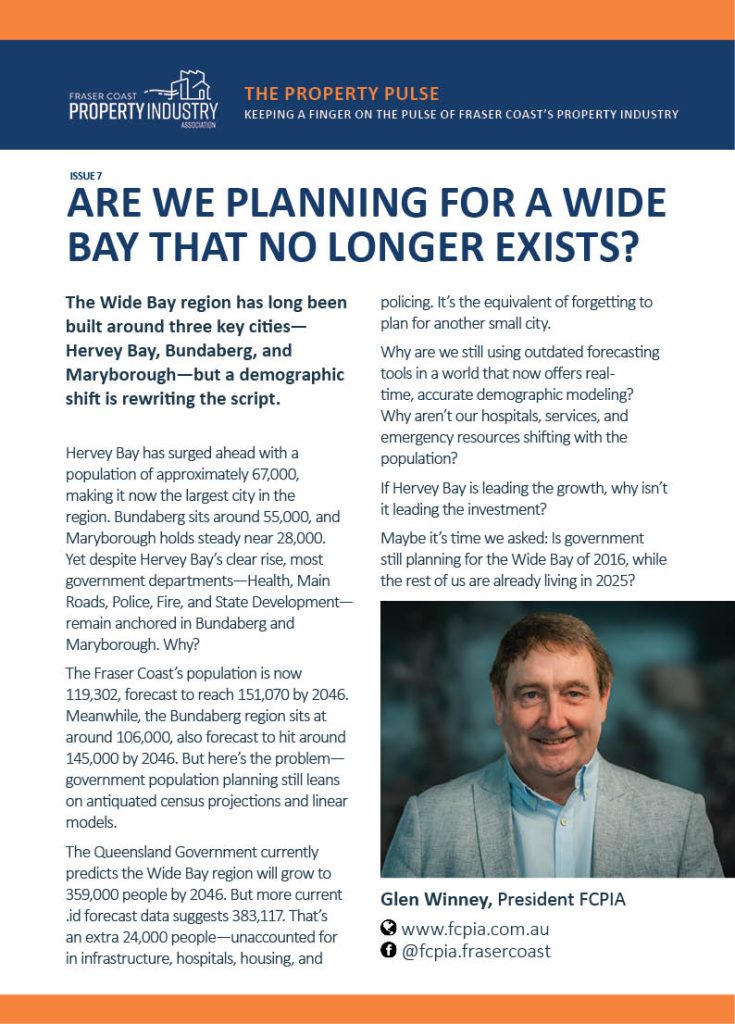The Wide Bay region has long been built around three key cities—Hervey Bay, Bundaberg, and Maryborough—but a demographic shift is rewriting the script.
Hervey Bay has surged ahead with a population of approximately 67,000, making it now the largest city in the region. Bundaberg sits around 55,000, and Maryborough holds steady near 28,000. Yet despite Hervey Bay’s clear rise, most government departments—Health, Main Roads, Police, Fire, and State Development—remain anchored in Bundaberg and Maryborough. Why?
The Fraser Coast’s population is now 119,302, forecast to reach 151,070 by 2046. Meanwhile, the Bundaberg region sits at around 106,000, also forecast to hit around 145,000 by 2046. But here’s the problem—government population planning still leans on antiquated census projections and linear models.
The Queensland Government currently predicts the Wide Bay region will grow to 359,000 people by 2046. But more current .id forecast data suggests 383,117. That’s an extra 24,000 people—unaccounted for in infrastructure, hospitals, housing, and policing. It’s the equivalent of forgetting to plan for another small city.
Why are we still using outdated forecasting tools in a world that now offers real-time, accurate demographic modelling? Why aren’t our hospitals, services, and emergency resources shifting with the population?
If Hervey Bay is leading the growth, why isn’t it leading the investment?
Maybe it’s time we asked: Is government still planning for the Wide Bay of 2016, while the rest of us are already living in 2025?

